The Ghent Altarpiece: finding Van Eyck
In 2012, the KIK-IRPA initiated the first phase of a conservation campaign, focusing on the reverse of the side wing panels (see the image on the right, showing the altarpiece in closed position). Surprisingly, a preliminary investigation and first series of cleaning tests lead to the insight that considerable parts of the panels had been overpainted in the distant past. The extent of this overpainting had never been detected with traditional imaging techniques, such as X-Ray Radiography and Infrared Reflectography, due to its good condition and the fact that the overall composition and age crack pattern follows that of the original paint layer in most places. This discovery confronted the conservators with a dilemma on how to proceed the treatment of this masterpiece. It became instantly clear that the choice for removal or conservation of the overpaint depended on an accurate understanding of the layer stratigraphy and the quality and condition of the hidden Van Eyck paint layers.
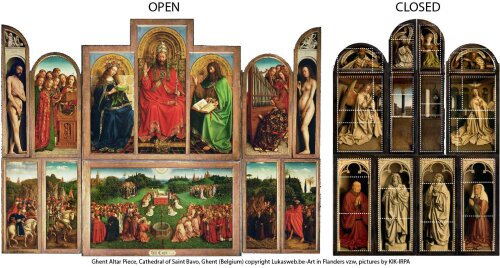
MA-XRF
As macro X-ray Fluorescence scanning (MA-XRF) recently succeeded in revealing hidden compositions and pentimenti in a number of 16th-20th C easel paintings, all verso panels were analysed in reflection mode by means of the in-house built MA-XRF instrument of the University of Antwerp. The total painted surface measuring over 8 m² was analysed in 60 working days, making it the largest polychromed surface that has been entirely chemically imaged so far.
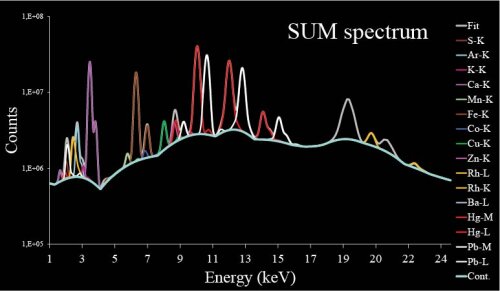
The SUM spectrum shows the sum of >2 million XRF spectra recorded on the Vyd panel (shown above) with indication of the applied fit model, calculated background substraction and the contribution of all emission lines to the spectral peaks. The ensuing compositional information was presented in a visual manner by plotting the detected fluorescence signals in elemental distribution maps (see example above). The dotted white rectangles on the closed altarpiece illustrate how the painting was divided into 37 areas for scanning. After spectral deconvolution, the separate maps of each panel were seamlessly compiled.
The chemical images demonstrated that the scenes were largely overpainted. In particular, the high energy Pb-L and Hg-L maps revealed an underlying composition with more elaborate and sharper forms showing a more sophisticated gradation of tones and additional highlights that more closely resembles Van Eycks’s skilful painting style.
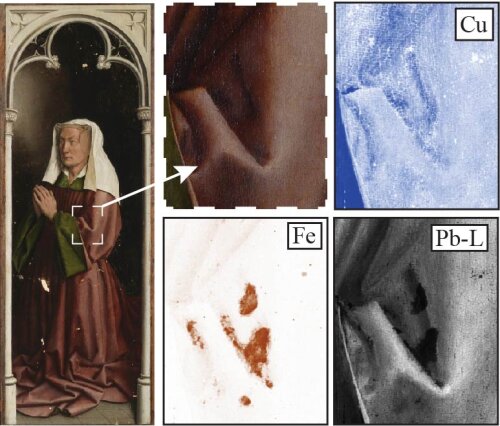
The detail scan shown above illustrates how MAXRF revealed the exact location of small paint losses in the original composition (Pb), hidden from the naked eye by the (often pristine) overpaint. In addition, the Fe map demonstrates how a reddish iron-based material was first applied to fill the defects before the application of the overpaint,
in this case holding azurite (Cu) and a red lake (not detectable by MA-XRF)
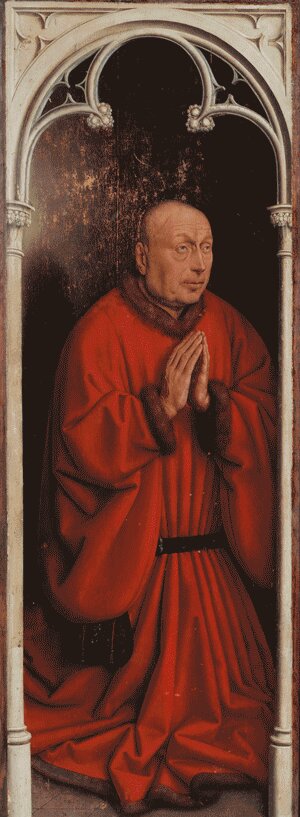
SEM-EDX
SEM-EDX measurements on paint cross-sections, performed at the KIK-IPRA, appeared indispensable for obtaining more precise information on the layer build-up. Next to providing localized information on low atomic number elements, for which MA-XRF is insensitive, SEM-EDX allowed situating the detected MA-XRF signals within the paint stratigraphy, thus permitting a more unambiguous interpretation of the distribution maps. In addition, investigation of the cross-sections established the presence of a varnish in between the original paint and the overpaint, indicating the feasibility of its mechanical removal.

Results and publications
Combined MA-XRF and SEM-EDX experiments unequivocally proved and visualised the presence of substantial overpaints. Moreover, visualisation of the sparse defects indicated that the hidden scenes were in a relatively good condition, a finding that strongly sustained the intensively debated choice for removal of the overpaint. In this way, the use of non-invasive chemical imaging combined with analysis of a limited number of samples allowed optimizing the conservation strategy, eventually resulting in the exposition of Van Eyck’s unrivalled painting technique after being hidden for several centuries.
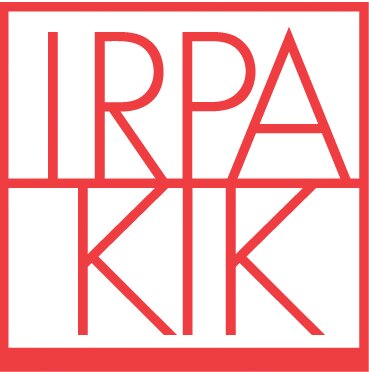
Angewandte Chemie
G. Van der Snickt, et al., Large-Area Elemental Imaging Reveals Van Eyck's Original Paint Layers on the Ghent Altarpiece (1432), Rescoping Its Conservation Treatment. Angewandte Chemie Int. Ed., 56 (2017), 1-6.
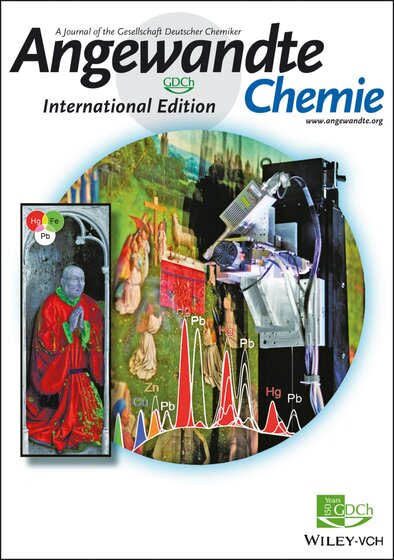
Video Zone
Time Lapse of the scans, Conference Lecture, Cobra TV and a three-part series on Flemish public television (VRT). The full series can be viewed here until 30/06/2020.